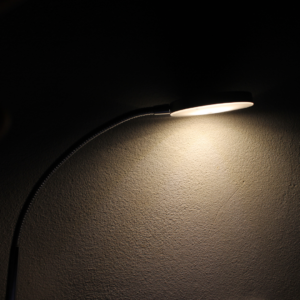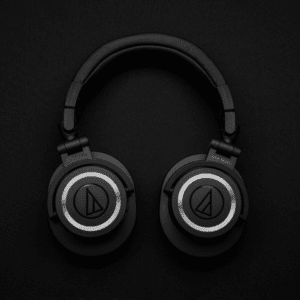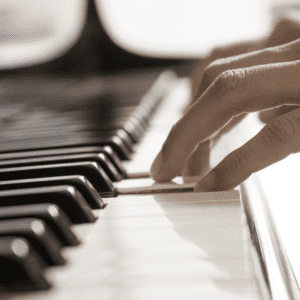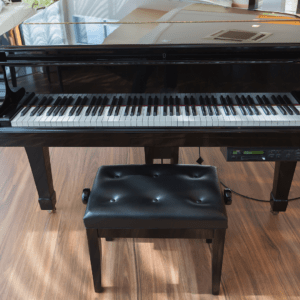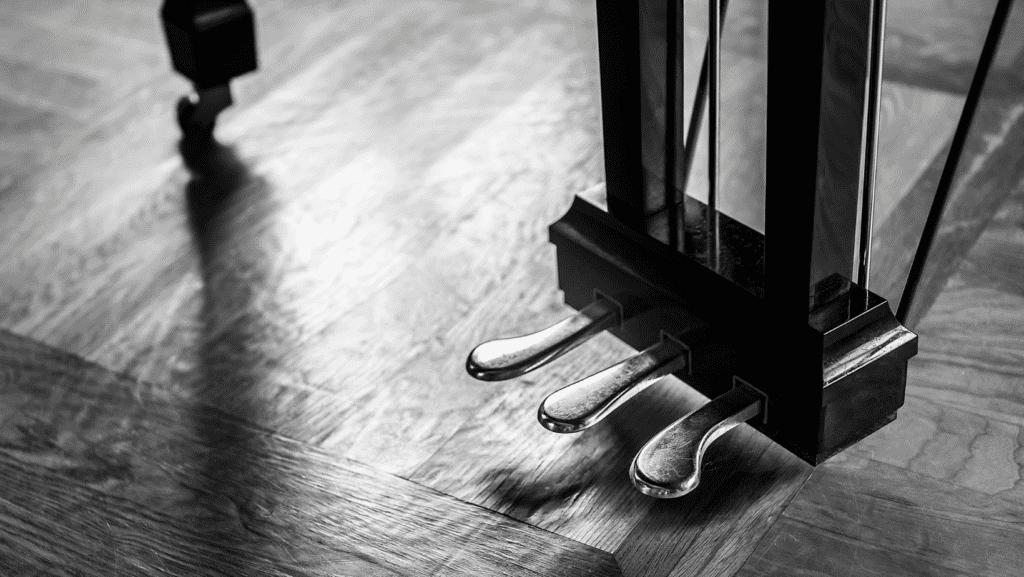
It’s rare to come across a song or piece of music that doesn’t use the sustain pedal. This is a must-have if you’re learning on a keyboard without built-in pedals. Also called a damper pedal, it is an essential element in playing a keyboard that can enrich the sound and connect the sound smoothly. For all keyboards players, having the best pedal for digital pianos and MIDI keyboards is essential.
Here are 5 best sustain pedals for different midi keyboards and digital pianos.
| 1.Best sustain pedal editor’s choice – Roland DP- 10 High-quality pedal with a non-slip rubber base that is compatible with both full and half-dampers. | Buy on Amazon | |
| | 2.Best sustain pedal for midi keyboard – StudioLogic VFP-3-10 A great value triple pedal with open polarity and solid body construction with rubberized levers. | Buy on Amazon |
| | 3. Best sustain pedal for digital piano – M-Audio SP 2 Universal sustain pedal with chrome foot pedal for a natural, realistic pedal action | Buy on Amazon |
| | 4.Best sustain pedal for yamaha keyboard – Yamaha FC4A This Yamaha FC4A pedal offers a feel close to that of the pedal on an acoustic piano | Buy on Amazon |
| | 5. Best sustain pedal for casio keyboard – Casio SP-20 Elegant design with a black finish, non-slip rubber, and full damper functionality | Buy on Amazon |
5 Best sustain pedals reviewed
Best sustain pedal editor’s choice – Roland DP- 10
Roland Corporation is a well-known Japanese manufacturer of musical instruments, software, and equipment. It was constructed in 1972 and has gained a reputable reputation throughout the years. This Roland sustain pedal is favored by professionals because of its high quality and sturdy construction. The Roland DP-10 is a lightweight 1.69 pound pedal that works with compatible keyboards.
Some keyboards may not be compatible with the device because it lacks a polarity switch. This well-made, realistic-feeling pedal has a non-slip rubber plate that provides stability and grip to the floor, which is crucial for performing on wood or other slippery surfaces, as well as a 7-foot extension cord for stacking multi-keyboards.
Keyboards with polarity switches will function well with the device since they can convert to negative polarity. The pedal itself is composed of metal, while the rest is built of plastic, allowing the sustain pedal to withstand regular use. If you own a Roland keyboard, sound module, Micro Composer, V-Studio, effect processor, amplifier, Boss drum machine, recorder, multi-effects pedal, or other function device, this is the pedal you’ll need to perform a variety of remote functions.
Pros
- Has a rubber non-slip base
- Produces high-quality sound
- Great for professional and stage use
- Compatible with both full and half damper
Cons
- There is no polarity switch
Best sustain pedal for midi keyboard – StudioLogic VFP-3-10
Studiologic is known for producing high-quality MIDI controllers as well as cutting-edge digital pianos, organs, and pedals.This pedal delivers absolute precise control and is built on a more than 40-year legacy of producing tactile interfaces for musical instruments.
The VFP 3 10 is an open triple piano type sustain pedal and its open polarity at rest. It may be used with any midi or any kind of keyboard, and it has a high-end, professional feel to it. It has a robust body that will endure a long time, and the rubberized levers are just like the genuine thing.
The VFP 3 10 weighs 2,4 pounds and has a mono and stereo connection as well as a 6.56 foot cable. The pedal unit actually has three cords coming out of it, one for each pedal. (This three-pedal unit is really an assembly of three of their own pedal units.) StudioLogic combines these three wires into only two: The right and center pedals of the unit (on a piano, the sustain and sostenuto pedals – or whatever function you wish to give to them) have a TRS (stereo) 1/4″ phone plug, while the left pedal (or the soft/una corda pedal) has a mono (TS) 1/4″ phone plug.
Pros
- Has 3 pedals (soft, sostenuto and sustain)
- Solid body construction with rubberized levers
- Open polarity at rest,allowing it to work with both open and closed keyboards.
Cons
- Has two ¼ jacks (most keyboards have one ¼ phone jack)
Best sustain pedal for digital piano – M-Audio SP 2
The SP-2 is a polarity-switchable universal sustain pedal that works with all digital pianos that have a “sustain” or “damper” 1/4″ jack. Its traditional design, which includes a rubber-coated casing and a chrome foot pedal, is as appealing to the eye as it is to the foot. The M-Audio pedal has a heavy-duty mechanism that makes it long-lasting and sturdy. It weighs 0.88 pounds and is excellent for both the studio and the road.The device is 10.5 x 3 x 2.5 inches in size, with a 6 foot cable that allows you to connect and play without restrictions.
This pedal has the same gentle resistance as a full-sized piano pedal, making it feel just like playing an acoustic piano.It allows superb real-time control of high-end digital pianos and extensive keyboard or synthesizer settings because of its precise responsiveness. The bottom of the pedal contains a polarity switch that allows it to function with almost any keyboard
Pros
- Affordable
- Open and closed polarity
Cons
- Squeaks overtime
Best sustain pedal for yamaha keyboard – Yamaha FC4A
The Yamaha FC4 is a high-end pedal that goes beyond the norm. It functions similarly to an acoustic sustain pedal, but with additional characteristics like the ability to work as an F5 controller. Drum machines, synthesizers, and tone modules all fall under this category.
The design of the pedal, with its angled edges, differs from that of the standard form.The design makes it possible for the user to utilize the device in a comfortable manner. Although the device weighs 1 pound, there is no need to be concerned because it is equipped with strong rubber feet to keep it from slipping. A 6ft cable is provided for connecting purposes with the standard 1/4 connector. The pedal will function properly if you have a keyboard with a polarity switch.
You should be aware that this pedal does not have a polarity switch, so you must plug it in while the keyboard is turned off, step on the pedal, and power on the keyboard while your foot is on the pedal to change the polarity.
Pros
- Lightweight
- Great for transport
- Anti-slip rubber
Cons
- Doesn’t have polarity switch
- Lacks half-damper function
Best sustain pedal -for casio keyboard – Casio SP – 20
It also functions similarly to a normal piano’s sustain pedal. It’s also quite simple to use; there isn’t any form of setup needed. The pedal, which weighs 1.75 pounds, is fitted with non-slip rubber feet to keep it from moving anywhere. Because this device only provides full damper capabilities, individuals who want half dumper features should look for alternative models.A 14-inch input connector is included with the pedal to attach it to your keyboard, as well as a lengthy cord for your comfort.
The Casio SP20 is not suitable for users who want a device with a polarity switch. Because it has negative polarity, you’ll need a keyboard with its own polarity switch. The sound quality you find when you find a suitable keyboard, on the other hand, will be welcomed. This pedal can be used for professional and nonprofessional practice.
Pros
- Professional and stage use
- Amazing sound quality
- Elegantly designed
- Non-slip rubber
Cons
- There is no half-damper function
- Pricey
Best Piano Pedals Buying Guide
What does a sustain pedal do on a keyboard?
The sustain pedal allows you to make a smoother transition between any kind of musical figures. For example, after you play the chord and press the sustain pedal, the chord’s notes continue to resonate even when you shift your hand to play the following chord.
While classic sustain pedals have a traditional sense, the digital sustain pedal has a more modern feel. Sustain pedals are lightweight and portable, eliminating the need to carry a piano around. Traditional sustain pedals lift the dampers physically to keep the notes going, whereas newer sustain pedals rely on digital impulses. The wiring is in charge of getting the signals from the midi controller or keyboard to the midi controller or keyboard. Once the signals have been transferred, the device will interpret them to determine whether the sustain pedal should be turned on or off.
Where to plug in sustain pedal on keyboard
The sustain pedal on electronic keyboards is a separate device that plugs into a socket on the back of the keyboard.
Because it is handled with the right foot, the sustain pedal (also known as the sostenuto pedal) is always the one to the right of the other pedals. The sustain pedal on an electronic keyboard is a separate device that plugs into a socket on the back of the keyboard.
How to use a sustain pedal?
When using the pedal, the heel of your foot works as a lever, pressing down on the pedal while your heel is on the ground. The second thing to remember is to always keep your foot on the pedal. When necessary, you’ll be able to quickly depress the sustain pedal.
Some of the things you can do with the sustain pedal are: playing individual chord notes or a melody, as well as arpeggios and broken chord patterns.
The sustain pedal keeps the separate chord notes ringing so they all sound together even if you’re only playing one at a time.
Many synthesizers allow you to plug in a sustain pedal, but the pedal’s primary job isn’t to make notes sustain; instead, it can be used to vary or even switch the synthesizer’s sounds.
As a result, the sustain pedals you might employ with a midi or synth can go beyond the fundamental “on or off” sustain pedals we’ve looked at thus far. Some synthesizer pedals allow you to rock the pedal up and down to make your performance more expressive. Others have two or more pedals positioned on a platform, allowing you to control distinct functions with each.
What pedal is compatible with your keyboard?
It’s crucial to note that not every keyboard will work with every pedal.
Some manufacturers make sustain pedals that are only compatible with their keyboards.
Yamaha products, for example, are wired differently than Casio ones, which might be confusing for users. The Casio SP20 sustain pedal, for example, is mostly used with Casio keyboards. You can choose suitable devices based on the design and polarity of the keyboard. Manuals are a valuable source of information on your keyboard’s polarity. Most sustain pedals would be compatible with your keyboard if it includes a polarity switch.
What Is Open And Closed Polarity?
Sustain pedals for keyboards come in two polarities: open and closed, with the associated polarity varying by manufacturer and model. Polarity has an effect on the sound quality of sustain pedals.
Major manufacturers pedals, such as YAMAHA and ROLAND, are generally closed, while KORG pedals are generally open. Different manufacturers can be used without problems if the polarity is the same, however it is generally preferable to utilize the manufacturer’s recommended items. If a sustain pedal is simply a switch, it lacks polarity. Its sole purpose is to disrupt the signal. Reversing the wires to the switch has no effect on polarity.
It is also preferable to purchase a keyboard or sustain pedal that has a reverse polarity option to avoid any confusion. If your keyboard doesn’t have a polarity switch, you’ll need to find a long-lasting pedal that works with the polarity you’ve chosen.
The polarity of both the keyboard and the sustain pedal is usually indicated by the manufacturer.
To conclude
Using the damper pedal to enhance your playing experience comes effortlessly to some people, while others must work hard to master the technique and grasp how the damper pedal fits into their overall piano playing and musical enjoyment. When looking for a new digital piano, the pedals, particularly the sustain damper pedal, are crucial, and they must function properly. When you understand the functions of the many types of digital piano pedals available, you will be able to select the ideal digital piano with pedals.
Because of its outstanding quality, we chose the Roland DP-10 as our top selection.
It allows the player to choose between half and full damper settings, allowing for greater musical freedom. The unit also has a foot extension to ensure the player’s comfort in both professional and household settings.
Overall, I think this is the greatest traditional style sustain pedal on the market.
Last update on 2023-04-27 / Affiliate links / Images from Amazon Product Advertising API


